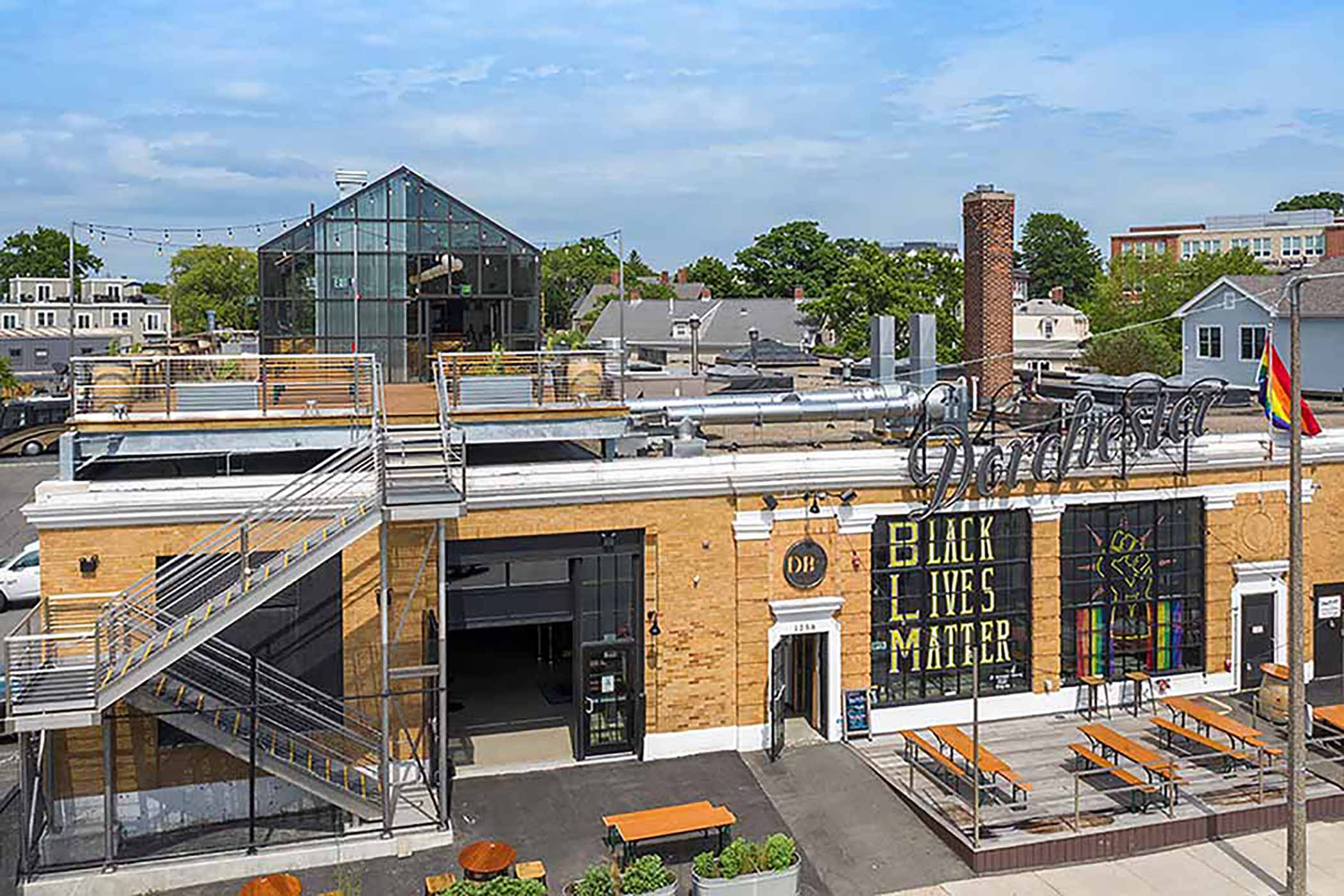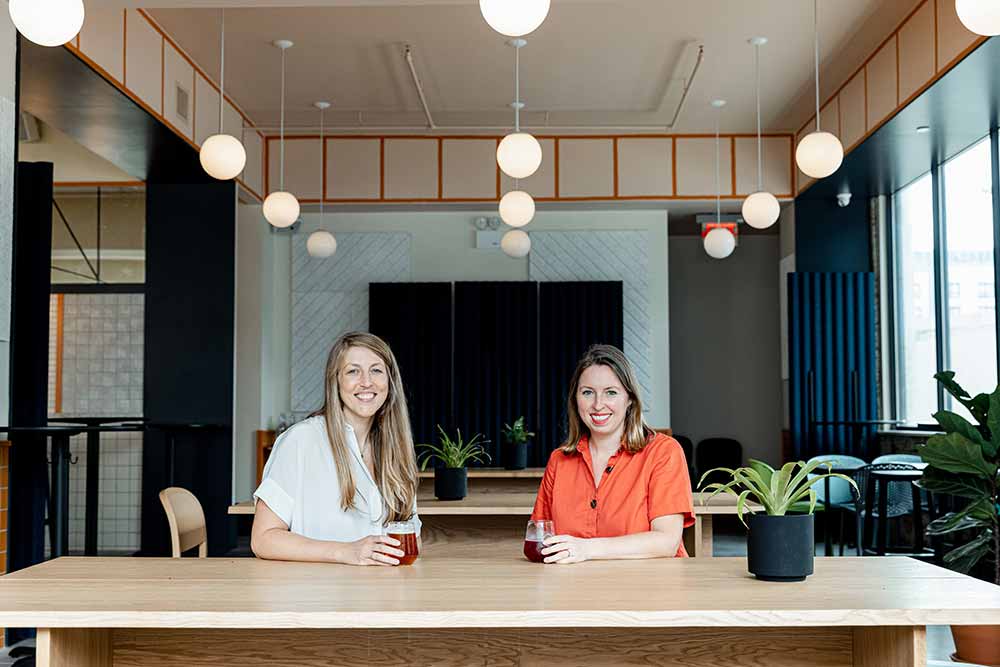Shop
Why We Might See More Brewery Mergers in 2024
Could this be the future?
Looking for More Stories From Andy Crump?
Tally brewery closures between 2022 and 2023, and the results will chill your veins: 319 in the former and a stunning 385 in the latter, summing to a cool 704 shutdowns in just two years, calling that an industry downturn is generous. It’s closer to a massacre.
Giving street corner doomsayers an attaboy never feels good, but the folks waving signs about craft beer’s end times might have a point. We’re not in Armageddon’s full throes, so thank heaven for small favors, but the place the business is in looks pretty bleak.
At least 385 closures demand attention and even respect, especially contextualized side by side with a drop in beer production, which would be a first if not for 2020.
But picturing declines in beer output is an abstract exercise, while picturing shuttered breweries is concrete. It has weight. If there’s a defunct outfit in your town, you can drive past and see it with your own eyes; you don’t have to imagine. And because you don’t have to imagine, the 385-plus-plus figure has somber power, provoking catastrophization.
Things seem bad.
Let that anxiety fester in the mind, and they start feeling a whole lot worse. If 2023 saw 385 breweries go bust, what will the landscape look like ten months from now?
That’s a question only time can answer, but in the meantime, brewers are already finding ways of avoiding shutdowns: brewery mergers.
Fish gotta swim; birds gotta eat; brewers gotta make beer.
If a threat to their natural function in our broader cultural ecosystem rears its ugly head—like the high price of doing business, the subsequent price hikes that trickle down to consumers, and wellness trends muscling into the craft brewing space—then brewers will make a stratagem to stay alive.
One such enterprising maneuver are the brewery mergers we’ve seen all around the country: Two breweries (or more) fusing into one to keep each other afloat, making the same beer they’re known for under a unified banner. In 2023, we saw a slow rise of brewery mergers. For instance, San Leandro, CA’s Drake’s Brewing picked up Bear Republic Brewing over in Cloverdale; Utica, NY’s FX Matt Brewing Company bought Frederick, MD’s Flying Dog Brewery; Seattle, WA’s Stoup Brewing bought Optimism Brewing; and Sunnyvale, CA’s Faultline Brewing joined forces with Laughing Monk Brewery over in San Francisco, to name a few.
Brewery mergers appears fraught on its face. Every brewery distinguishes itself through tap rotations, whether offering an array of styles to suit a broader customer base or specializing in specific styles. Some breweries are lager breweries; others focus on IPAs, stouts, or wild ales.
But then again, a brewery can’t distinguish itself at all if the money runs out and the doors close.
Brewery mergers can be a lifeline, keeping doors open and beers flowing.
It’s The Stupid Economy
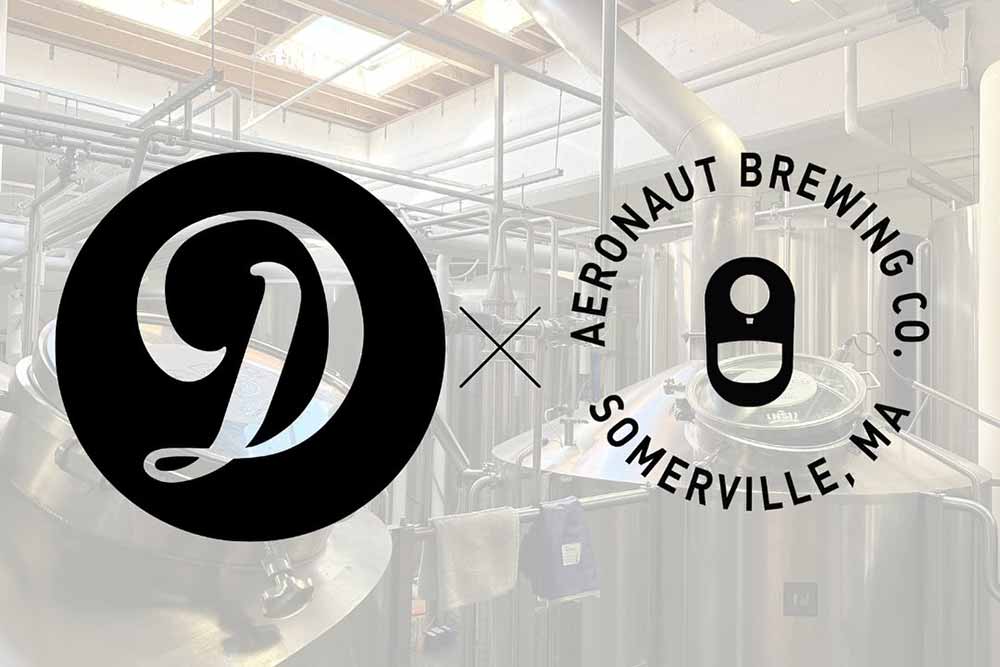
Graphic courtesy of Dorchester Brewing
Understanding the chief reason why so many breweries are going the way of the dodo takes only as much time as you spend perusing the morning paper: Inflation.
Americans are indeed drinking less beer than ever; it’s true that beer alternatives, from non-alcoholic beers to hop waters to RTD (ready-to-drink) cocktails, have exploded in popularity among both the frugal and the health-conscious. If you need a reason for beer’s slow-rolling decline, you can have several instead as a treat.
But nothing is putting the hurt craft brewing like the inflation crisis, a miserable wallet-strangling phenomenon that’s raised the cost of making beer countrywide.
Shipping prices have gone up, as has labor. Raw ingredients, from malt to hops, have gotten expensive; aluminum is pricier, too. After all, you need an adequate container to pour that costly beer in before you sell it to customers.
So now, more than ever, it’s vital for brewers to perform the one task they didn’t get into for craft beer: Business mathematics, a king bummer when your purpose in life is making liquid good times, but a necessary one.
“Numbers don’t lie,” as Matt Malloy, co-founder and CEO of MA’s Dorchester Brewing Company (DBC), puts it, “and you need to understand exactly what things cost you.”
Late last year, DBC partnered up with another Massachusetts brewery, Somerville’s Aeronaut Brewing Company, to form the nascent Tasty Liquids Alliance, an umbrella under which Malloy aims to gather additional area brewers. Malloy expects the merger to close in Q3 or Q4 of this year. That’s a ways away, but the team has hit the ground running, regardless of the gap between now and the merger’s finalization.
“We’re rocking and rolling already,” Malloy confirms. “In fact, we’re having a pretty busy January and February on our manufacturing side, which is great.” Aeronaut’s production facility is in Everett, just fifteen minutes from Somerville; they’ve already decamped production to DBC’s Mass Ave facility. As ringing endorsements of a new association go, that ranks high.
Howdy, Partner (Brewing)
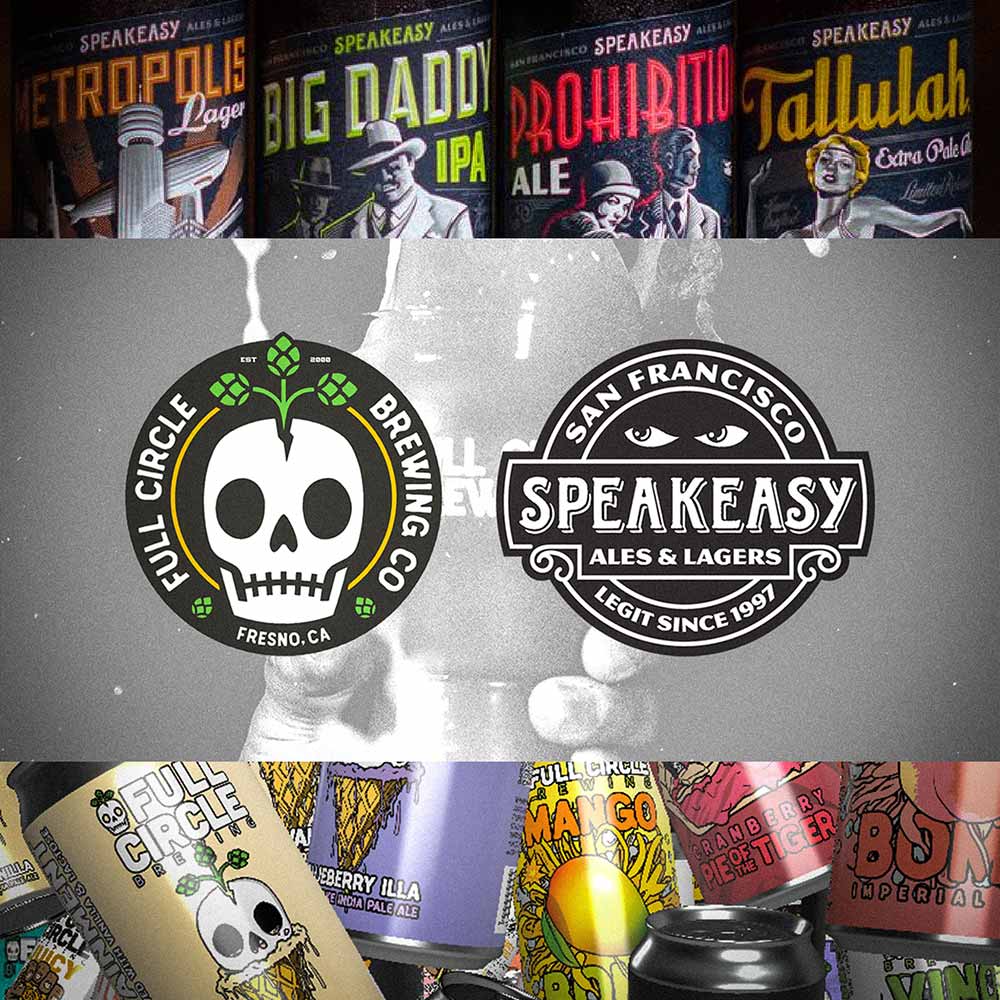
Graphic courtesy of Full Circle Brewing Co.
Malloy has a mind for money management, and in 2024, that’s key to navigating dicey (sparge) waters. Partner brewing—the friendlier, stigma-free term for what was previously known as “contract brewing”—is an excellent cost-saving solution for breweries sticking it out for the long haul.
Older blueprints for success in craft beer have lost efficacy through the passing of years and ratcheting economic burdens imposed on the industry, and he’s sensitive to the shift.
“A lot of people are fighting the good fight,” Malloy explains. Their goal is to grow, grow, grow, to be the next big brewery. That was a great strategy five years ago, but that’s not the reality anymore.”
Now the market’s matured and more breweries are jockeying for position on the same shelves in liquor stores and beer cellars; the growth model doesn’t quite cut it in an environment like that. Hence partner brewing to ease the financial strain on like-minded brewers.
Consolidation of cost is arguably the best reason for brewery mergers, but it isn’t the only reason, either. “[Merging] allows you . . . to leverage two separate entities’ skill sets,” says Arthur Moye, the creative director for Fresno, CA’s Full Circle Brewing Co., who, in April of 2023, announced a merger with San Francisco’s Speakeasy Ales & Lagers; as of now, the two fully merged, and their futures are secured.
Full Circle first opened in 2000, and Speakeasy in 1997. Moye took ownership of Full Circle in 2016; concurrently, Speakeasy hit a production slump, squeezing out a paltry 5,446 barrels from 2016 to 2017 and an even more scant 2,100 in 2018.
At this point, the company was in receivership until Ces Butner, president of the Oakland, CA-based distributor Horizon Beverage Company, snapped it up for himself. Years later, Moye took over ownership, and as with Full Circle, he and his team have given the place a fresh coat of pain—albeit using slightly different techniques.
Think of the fusion of one to the other as building a contemporary tot lot over the old neighborhood playground..
“That creates, in our portfolio of beers, less risk, where Full Circle’s trying to be cutting edge,” Moye adds. “Meanwhile, we’re focusing on maintaining the quality and distribution of the brand that’s been around forever.”
One serves as tried-and-true bedrock for the other’s fancy-pants modern-day newness.
“We bought Full Circle, and it was an existing entity, right?” Moye explains. “But it wasn’t known much beyond [California’s Central Valley]. So, although it’s a similar situation, we had to develop that brand awareness from basically the ground up. With speakeasy, we can infuse our ability to develop brand awareness with a legacy name that people are already aware of, so there’s not that expectation to come up with a hazy every week.”
Capitalizing on that preexisting patronage helped facilitate the merger. Even if that consumer base rotates between the two brands, they’re loyal to them, giving Full Circle and Speakeasy solid grounding from the start.
Give The People What They Want: Customer Outreach
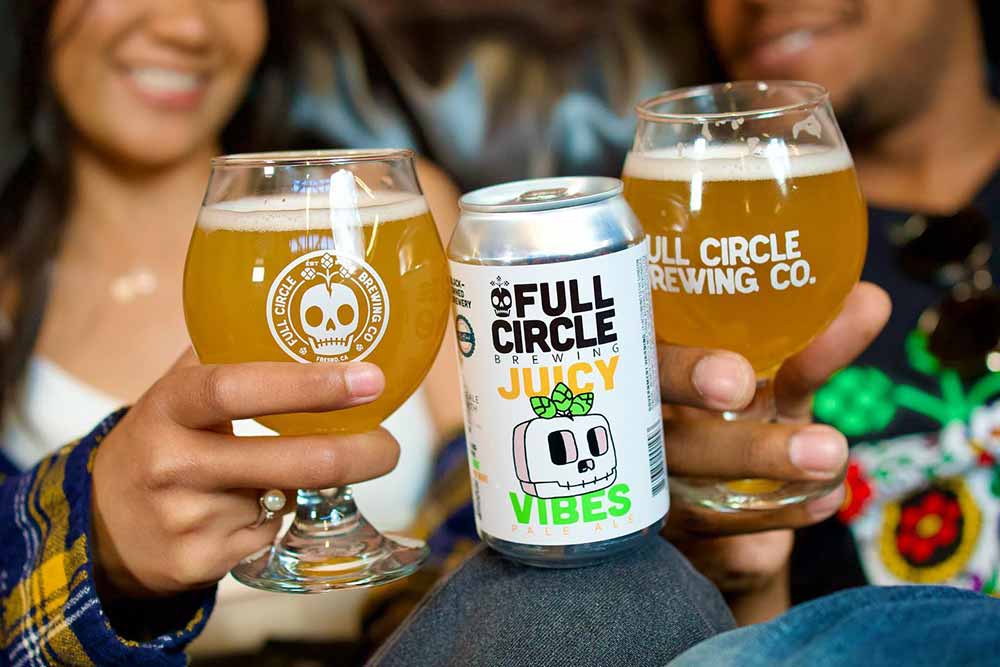
Photography courtesy of Full Circle Brewing Co.
Moye’s insights into customer behavior reveal another key to these brewery mergers’ success: The people you sell your beer to.
In Moye’s view, nothing is more important than keeping your clients in the know about the merger, from its announcement to its initiation to its completion. If they don’t know what’s going on, they won’t buy your beer; your business accounts won’t, either.
“If it just happens and you don’t prepare the consumer and the retailer, there’s a bit of an uphill battle,” Moye points out. “Whatever story they make up in their head is the story.”
That means that without proper, clear outreach, drinkers and retailers might assume the worst: That the brewery has gone out of business. The fact that the brewery hasn’t in this hypothetical negative scenario is meaningless because you’ve created a critical problem for yourself to solve.
“There’s some PR that’s got to happen in advance,” Moye adds, though the Full Circle-Speakeasy merger had a built-in PR advantage: The marriage made them the largest Black-owned brewery in the country.
Even with that notch on their belts, though, people will cook up other ideas in their heads, and so, Moye says, “You just have to get ahead of that misinformation and get your own story out there.”
Malloy’s method for holding onto crowds comes down to diversification. “It’s classic in a mature market, right? Which is what we’re in,” Malloy says. “So, we’re doing more mobile stuff, more beer gardens, and parties, and whatever generates high-margin revenue.” Informing customers of the merger’s status is essential; giving them reasons to continue turning out for brewery events is equally so.
That bit of good news should encourage breweries seeking a fix for their own financial woes. If you hold open lines of communication and find ways to draw in patrons other than making good beer, and if you follow all the other steps necessary to run a business in a dire economic period, these brewery mergers will go off without a hitch.
Easy enough.
One Size Does Not Fit All
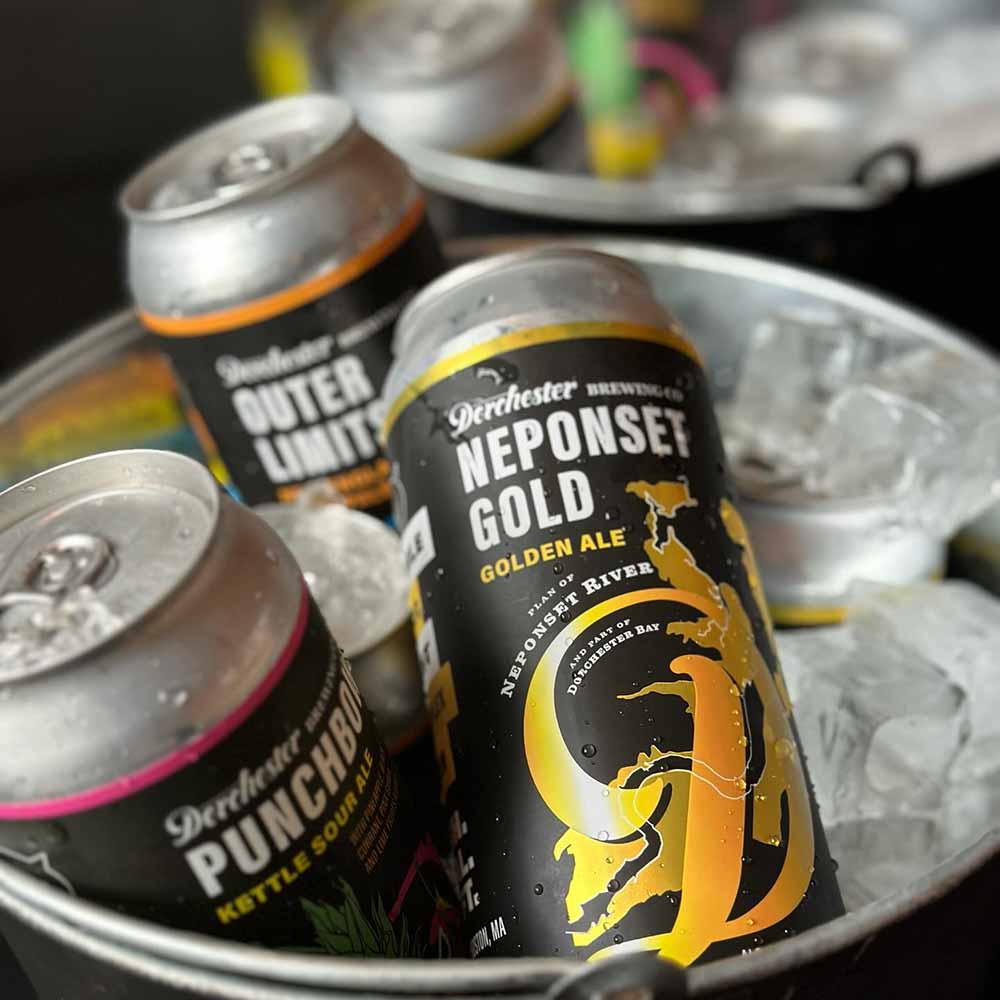
Photography courtesy of Dorchester Brewing Co.
What works for one set of breweries or several—Idaho Springs, CO’s Westbound & Down Brewing Company recently absorbed Aspen Brewing Company and Capitol Creek Brewing Company to close out their 2023—won’t necessarily work for others, of course.
Breweries have set up for partner brewing and for balancing blending staff across other companies.
“I would definitely say it depends,” Moye says. “The factors all have to be aligned, you know? That’s probably the most important part of the process: making sure you sync up and that there are not too many chefs in the kitchen. That’s one of the bigger problems with brands that are very similar in structure and types of people.”
Breweries with cultures and proclivities that are too alike may not play well together in a merger. They may play even worse when the almost inevitable redundancy of employees comes up; even if the merging entities see eye to eye on operations, people let go in the process won’t.
“Are people going to walk away? How are people going to react when maybe they don’t have a job?” Moye opines. “What kind of damage are they going to do in the market?” For him, these considerations emphasize a fundamental question all brewers must answer before partaking in a merger: Why are we doing this?
In keeping with his business-minded approach, Malloy brings it all back to the bottom line. “We have the privilege of making beer for 15 breweries, and that’s not everybody,” he admits. “It is a very difficult way to make money because the people that manufacture beer usually get the least amount of margin. I’m in single digits to low teens on my margin. That’s a manufacturing margin.”
Understanding the industry and knowing your costs can sink or swim a brewery, even when it isn’t in a merger. Anyone walking that path must know both, or they might take down their future partners with them. Malloy isn’t unsympathetic to brewers’ reluctance to be entrepreneurs in addition to craftspeople. “You wanna make beer and have fun, man,” Malloy says.
“But you gotta do the math.”

